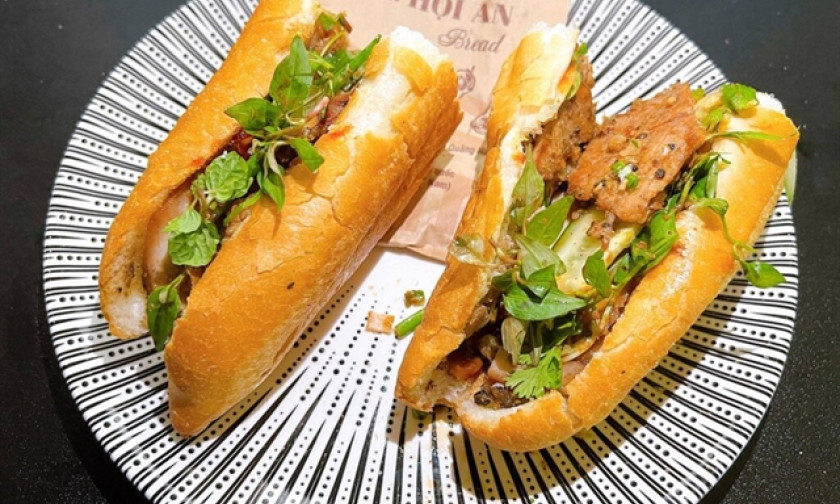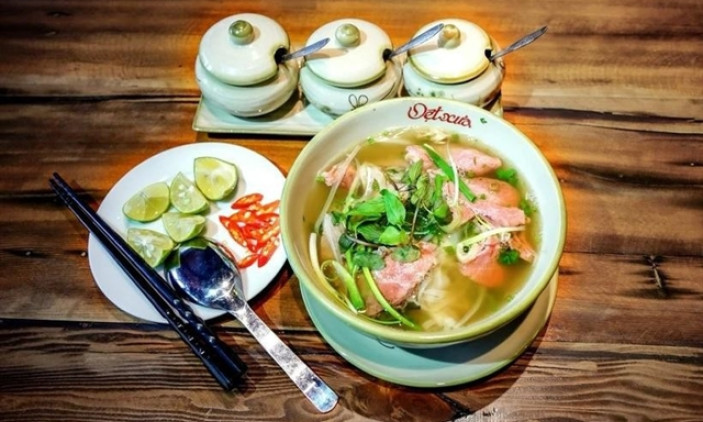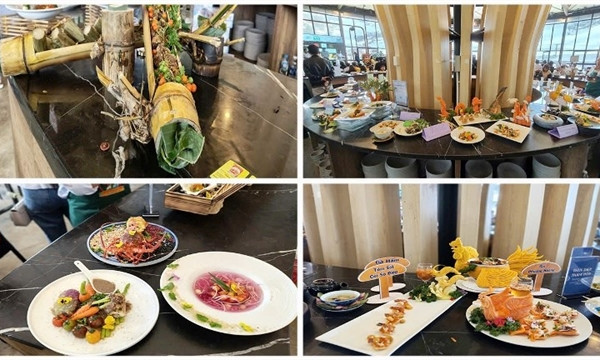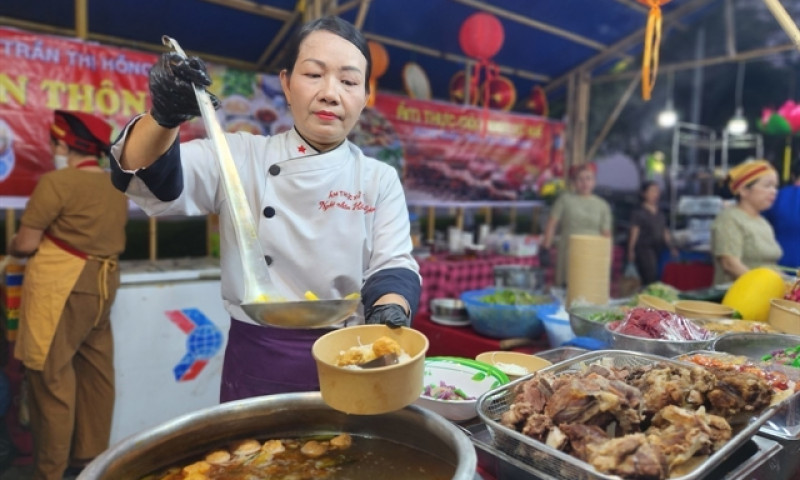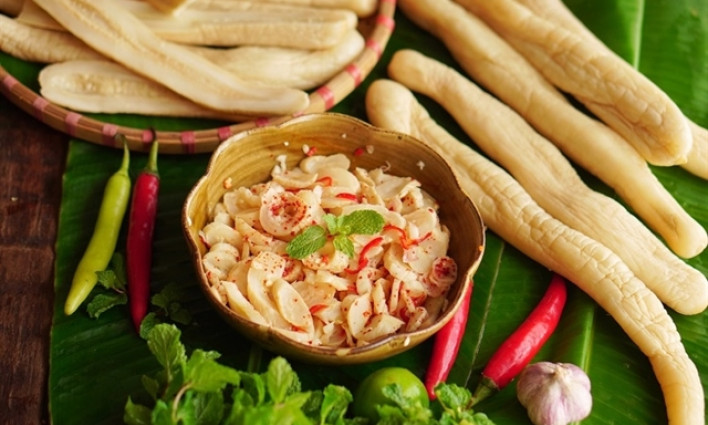How to make Quang Nam thick noodles with chicken
Quang-style noodle soup is a specialty of the central province of Quang Nam, home to Hoi An. It features thick noodles and uses much less broth than other types of Vietnamese noodle soup.
This recipe serves about 4 to 6 people, takes approximately 55 minutes to prepare, and provides around 3,470 calories in total.
Ingredients
- A whole chicken (approximately 1.3 kilograms)
- 200 grams pork belly
- 20 quail eggs
- 1 turmeric
- A handful of shallots
- Scallions
- 4 cloves of garlic
- 2 stalks of lemongrass
- Spices: fish sauce, salt, sugar, stock powder
- Peanut oil, cashew oil
- Quang-style noodles, rice cracker
- Herbs and vegetables: banana blossoms, bean sprouts, basil, green onions
- Roasted peanuts
Instructions
1. Preparation
For the components:
- Wash then peel off the outer layer or skin of the turmeric using a knife or a peeler.
- After peeling, the exposed turmeric flesh can be crushed using a mortar
- Finely chop shallots and garlic.
- Cut the chili pepper lengthwise, open it up, and scrape out the seeds using a knife or spoon.
- After removing the seeds, cut the remaining chili pepper into thin slices. This process is often done to reduce the spiciness of the chili, as many of the heat-inducing compounds are concentrated in the seeds and membranes.
- Wash and slice green onions.

For the chicken:
- Clean the chicken with water, removing any unwanted parts, excess fat, or impurities.
- Rub the chicken with a mixture of lime juice and salt.
- Rinse the chicken thoroughly under cold water to ensure it's clean and free from any residues.
- Once cleaned and washed, cut the chicken into bite-sized pieces.
- In a bowl, combine 2/3 of the crushed turmeric, half of the minced shallots and garlic, 2 tablespoons of fish sauce, 1 teaspoon of salt, and 1 teaspoon of stock powder.
- Stir the mixture well to ensure the chicken absorbs the flavors thoroughly.
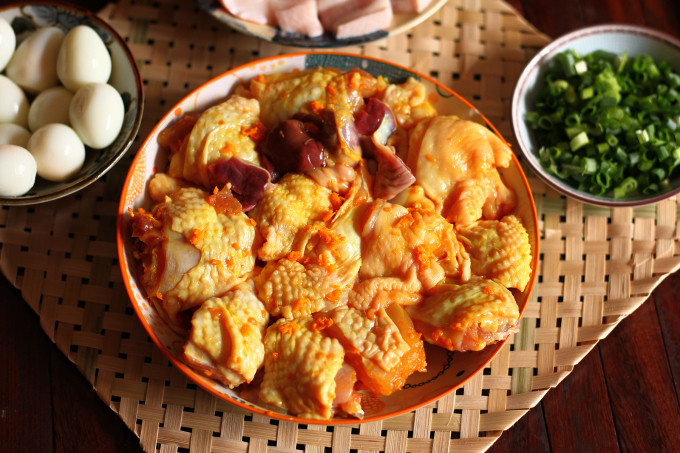
For the pork belly:
- Wash the pork belly thoroughly.
- Cut it into bite-sized pieces.
- Combine 1/3 of the remaining turmeric with 1/2 a tablespoon of fish sauce, 1/2 a teaspoon of salt, and 1/2 a teaspoon of stock powder for the pork belly.
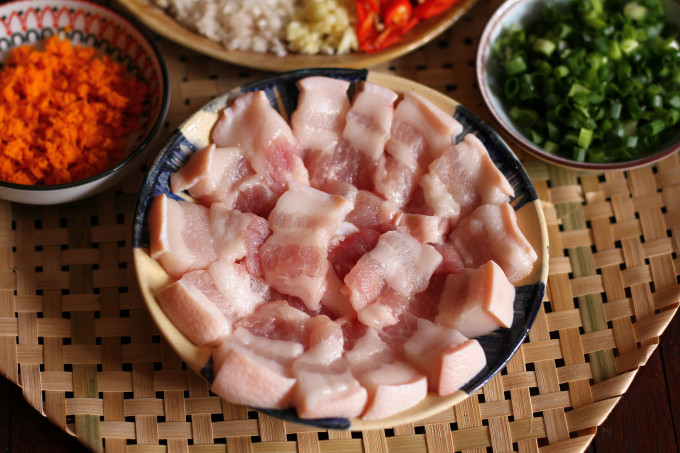
For the quail eggs:
- Boil the quail eggs until they are cooked.
- Soak the boiled eggs in cold water.
- Peel off the shells.
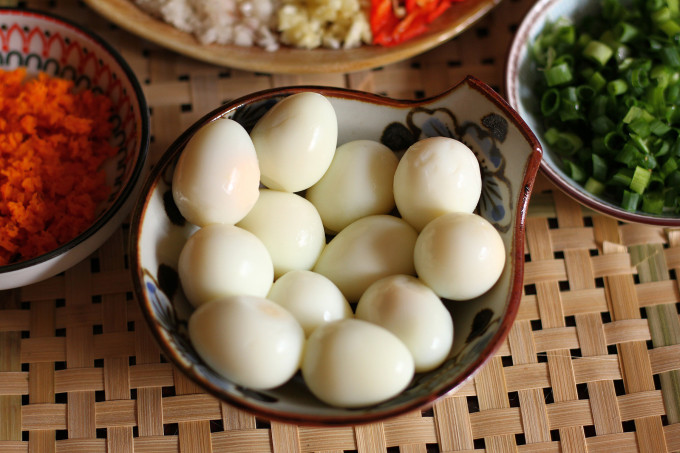
2. Cooking process
- Heat peanut oil in a pan.
- Add shallots and the remaining garlic, sauté until fragrant.
- Stir-fry the marinated chicken until it firms up.
- Braise the chicken over medium heat.
- Transfer the chicken to a pot and add a small amount of water.
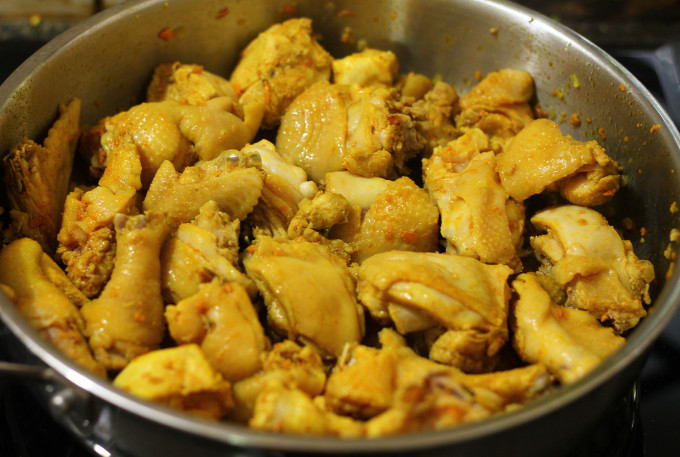
- Heat up the pan and stir-fry the marinated pork belly.
- Add quail eggs to the stir-fry and continue cooking until they achieve an appealing color.
- Transfer the entire mixture into a pot.
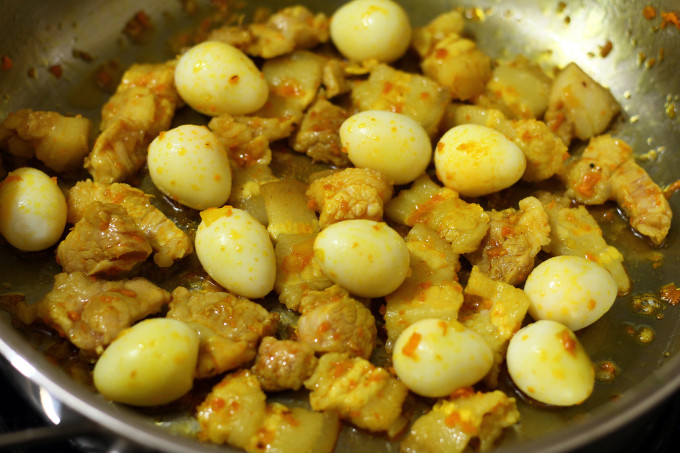
- Add crushed lemongrass to the pot for a boosted aroma.
- Occasionally remove any foam that forms.
- Once the meat and eggs reach the desired tenderness and flavor absorption, add a teaspoon of cashew oil for a beautiful color.
- Adjust seasoning according to your taste preferences.
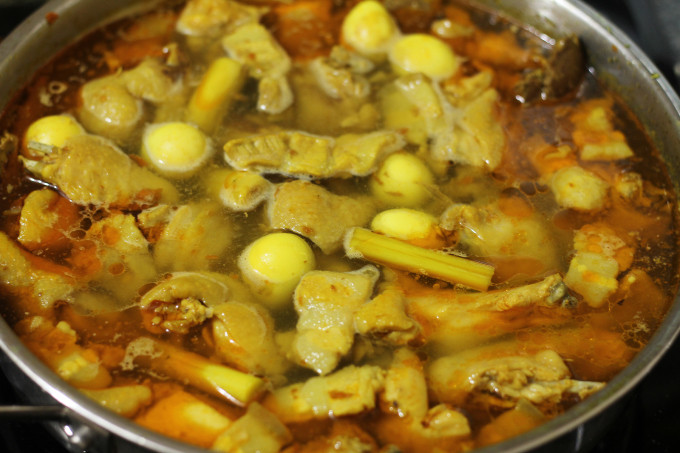
- Boil the thick Quang noodles in water.
- Arrange them in a bowl, placing chicken, pork, and quail eggs on top.
- Pour in the hot broth.
- Sprinkle it with green onions and roasted peanuts.
- Serve with raw vegetables and rice crackers for a delightful experience.

Final product:
The chicken is tender, the pork is flavorful, and quail eggs blend with crunchy peanuts and fresh herbs. The savory golden-flavored broth complements the dish. Enjoy by breaking rice crackers, add a bit of lime juice, and stir gently. The diverse flavors awaken the senses.
When serving Quang chicken noodles, it is advised not to add too much broth to the bowl. This recommendation is to preserve the characteristic slightly dry style associated with Quang-style chicken noodles.
The use of rice crackers is not just a culinary choice but also has significance within the cultural practices of the Quang community during commemorations of the deceased.
Quang noodles can be prepared with various fillings such as chicken, beef, shrimp, snakehead fish, and wallago catfish.

